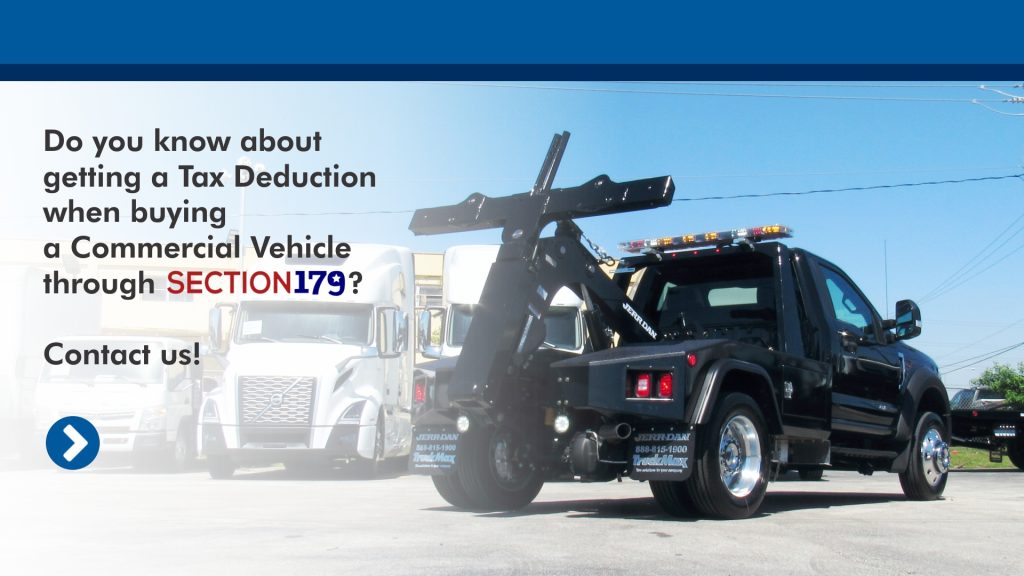You can get a tax benefit from buying a new or “new to you” car or truck for your business by taking a section 179 deduction. This special deduction allows you to deduct a big part of the entire cost of the vehicle in the first year you use it if you are using it primarily for business purposes.
A section 179 deduction is a special kind of tax deduction that businesses can take to reduce expenses. You can elect to take this deduction on the cost of certain types of business property. including business vehicles, instead of (or in addition to) recovering the cost by depreciating the property.
To qualify for a section 179 deduction for a business vehicle, it must be bought and put into service during the year in which you are applying for the section 179 deduction. Being placed in service means that a business asset is ready and available for specific use in a business or for the production of income.
In addition, the vehicle:
Check out our commercial truck inventory

Want to know the details?
The most important qualification for section 179 deduction purposes is business use. You can only take a section 179 deduction for vehicles used more than 50% of the time for business purposes. The deduction is limited to the amount of use and can’t be taken on personal use.
Section 179 deductions work like depreciation. The purpose of depreciation is to spread the expense (and tax deductions) of owning a business asset like a car or truck over the life of that asset.
Normally, depreciation is deducted as an expense to the business over the life of the equipment or vehicle. But a section 179 deduction allows you to take more of the expense of the purchase in the first year.
There are two limits on the amount you can elect to deduction under section 179.
Dollar Limits. The total amount you can take as section 179 deductions for most property (including vehicles) placed in service in a specific year can’t be more than $1 million. In other words, all section 179 deductions for all business property for a year can’t be greater than $1 million. The dollar amount is adjusted each year for inflation. There is also a “phase-out” limit of $2.5 million.
in addition to the general dollar limits, the maximum section 179 expense deduction for sport utility vehicles placed in service in tax years beginning in 2019 is $25,500, based on a specific IRS description of the vehicle type.
Business Income Limit. After you apply the dollar limit, the total cost you can deduct each year – including section 179 deductions – is limited to the taxable income from your business during that year. In other words, you can’t use a section 179 deduction to cause your business to have a loss. If you can’t take all or part of a section 179 deduction in one year, you can carry it over to the next year.
The calculation for this limit is complicated and it’s different for each business. See the instructions for IRS Publication 946 for type of vehicle and further details.
How to Take the Deduction
You or your tax preparer will need to complete IRS Form 4562 Depreciation and Amortization. Follow the instructions for Part I.
Key Requirements and Restrictions
Contact us to learn more about what your chances are by using Section 179 for your business.


